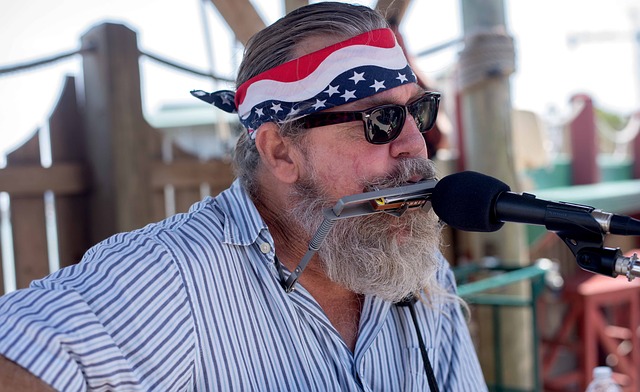What is the difference between the Chromatic and Diatonic harmonica [Wind Instruments]
When it comes to picking a versatile beginner instrument, few instruments will prove to be a better choice than a harmonica. Whether you are looking for an introductory gift for a child, or you are looking for a way to play your favorite blues songs, the harmonica allows you a simple outlet for musical expression. Although there are many different types of harmonicas, the two primary introductory types that people use are the chromatic harmonica and the diatonic harmonica.
Scale Differences
One of the primary ways that a chromatic and diatonic harmonica differ is in their notes number. Chromatic harmonicas feature 12 notes, which are all evenly spaced with a half step between them.
In contrast, a diatonic harmonica features seven notes separated by a combination of five whole steps followed by two half steps. The sequence is similar to the do-re-me notes that many musicians use to warm up their vocals or instruments.
Diatonic Harmonicas
The diatonic harmonica is the most commonly played harmonica. The diatonic harmonica is known for its ability to allow you to “bend” the notes. “Bending” refers to using your tongue, throat, and palate in order to lower the pitch of a note. This technique increases the number of sounds that are able to come out of a simple 10 note harmonica.
On a diatonic harmonica, inhale bends and blow bends are both used. These “bending” sounds are incredibly popular in certain forms of music, such as jazz or the blues. A chromatic harmonica’s notes are unable to be manipulated by bending, which is why many artists in jazz and blues choose the diatonic harmonica instead.
Famous Musicians Who Play the Diatonic Harmonica
Since the diatonic harmonic is so well-suited to play multiple forms of music, it should come as no surprise that it is an instrument enjoyed by many famous musicians.
The following performers are among the musicians who chose to use the diatonic harmonica:
- Bob Dylan
- Steven Tyler
- Sonny Terry
- Jimmy Reed
- John Popper
- Charlie Musselwhite
- Huey Lewis
- Neil Young
- Mick Jagger
- Little Walter
Chromatic Harmonica
Chromatic harmonicas include buttos on the side of the instrument which are used to play the normal scale. By pressing the button, you are able to play the half notes in between the major ones. This style of playing allows you a greater range of notes than you can achieve on a diatonic harmonica.
But there is one major important difference: you cannot “bend” notes on a chromatic harmonica. This means that if you are looking at the best chromatic harmonicas found at https://windysounds.com/best-chromatic-harmonica/, you will probably not be playing the blues.
However, musicians are able to use the chromatic harmonica to play a variety of complex jazz sounds, particularly those that are able to imitate a saxophone. This is done in a technique known as “overblowing.” This results in the harmonica producing a higher pitch than was intended.
Types of Musicians Associated With Chromatic Harmonicas
In addition to jazz, the chromatic harmonica is most closely associated with pop and classical music. These types of music typically require more than 7 notes. If you have ever hummed the theme to “Sesame Street,” you have hummed a melody that was originally played on a chromatic harmonica.
Additionally, during the middle of the twentieth century, there were many “harmonica bands” that frequently featured a lead harmonica player. This harmonica player always played a chromatic harmonica.
Examples of famous chromatic harmonica players include:
- James Cotton
- Charlie McCoy
- Toots Thielman
- Stevie Wonder
Differences in Design of The Harmonica
Every hole on both a chromatic harmonica and a diatonic harmonica produces two separate notes. One note is made when you exhale, and another note is made when you inhale. Since chromatic harmonicas contain more notes, they also have more holes. Typically, a diatonic harmonically only has 10 holes. In contrast, a chromatic harmonica typically has between 12 and 16 holes.
Which Type of Harmonica Is Best for Beginners?
Both the chromatic and diatonic harmonicas are used by beginners. If you truly love the sound provided by the chromatic harmonicas, you will do well with that as an instrument of choice.
However, diatonic harmonicas are frequently believed to be easier to learn how to play. Learning to play the 7 notes of a diatonic will make it easier for you to transition eventually to the chromatic harmonica once you are an advanced harmonica player.
Additionally, the diatonic harmonic is much more common. If you run into someone playing the harmonica, that person will be playing a diatonic harmonica more often than not

